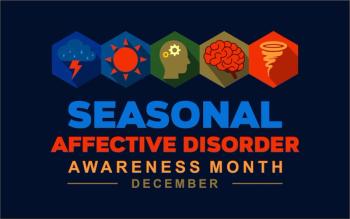
Results - and Lessons - From the Abandoned LIGHT Study
It's no surprise that researchers were unable to come to firm conclusions about the cardiovascular safety of Contrave based on partial results. An accompanying editorial in JAMA finds that a repeat of the LIGHT saga could force FDA to demand full safety data before approval.
There’s a simple lesson from the data and editorial on Contrave published today in JAMA: it pays to follow the FDA’s rules, because breaking them will cost even more.
Nearly a year ago, the Cleveland Clinic issued a press release that sent shock waves through the pharmaceutical world: researchers in the LIGHT study, led by famed cardiologist Steven Nissen, MD, effectively ended an expensive cardiovascular outcomes trial because the drug’s sponsor, Orexigen, had filed for a patent based on early results that the study team knew might not hold up.
What was worse, Nissen and his team—and everyone else, including FDA—saw that Orexigen had made claims based on a sliver of data they had sworn to keep secret. In fact, the agreement with FDA was based on protocols that Nissen himself had fought for, so that diabetes and obesity drugs could be approved while long-term safety studies continued.
The Cleveland Clinic blew the whistle on Orexigen by revealing that the next batch of data on Contrave was not quite as rosy as the first. The LIGHT trial had to be abandoned, but Nissen and his fellow researchers aimed to salvage what they could of the effort. The findings are
It’s not a surprise that the researchers conclude that the cardiovascular safety of Contrave remains uncertain, and that the answer awaits results of a new trial. Among 8910 participants, after 50% of the planned major adverse cardiovascular events (MACE), 102 of the events took place in the placebo group (2.3%) and 90 took place in the Contrave group (2.0%). Adverse effects such as gastrointestinal events were more common in the Contrave group. These results were less favorable to Contrave than results after 25% of the planned MACE.
Among overweight or obese patients at increase CV risk, the upper limit of the 95% confidence interval of the hazard ratio for MACE for the Contrave group, compared with placebo, did not exceed 2.0. “However,” the researchers write, “because of the unanticipated early termination of the trial, it is not possible to assess noninferiority for the prespecified upper limit of 1.4.”
The group was 54.5% female, with an average age of 61. Of the group, 32.1% had a history of CV disease and 85.2% had diabetes, with a mean body mass index of 36.6.
Nissen and the team note that besides the highly unusual circumstances that led to the end of the trial, they had seen poorer-than-normal adherence rates, which “may represent the typical pattern observed with antiobesity pharmacological therapies in clinical practice.”
An accompanying editorial suggests possible reforms in the wake of the LIGHT trial, although what has happened since may be its own punishment. While FDA forces Orexigen to undertake a brand-new safety trial and studies of drug interactions, other diabetes therapies are announcing results with positive CV outcomes and, in a few cases, protective benefits.
One of the writers is former FDA official Joshua M. Sharfstein, MD, who suggests that when behavior like Orexigen's occurs, FDA should delay approval "at least until a viable replacement study is being conducted." In a case like Contrave, FDA should use the Risk Evaluation and Mitigation Strategies to "counter misinformation or restrict use" of the drug as appropriate.
“The LIGHT study should serve as an important message to sponsors of clinical trials,” write Sharfstein and Bruce M. Psaty, MD, PhD. “Repeated breaches of confidentiality may leave the FDA no alternative other than to require that full safety studies be conducted prior to product approval. The demise of the LIGHT trial is a reminder that basing approval on interim safety data is a carefully drawn compromise, not an entitlement.”2
References
1. Nissen SE, Wolski KE, Prcela L, et al. Effect of naltrexone-bupropion on major adverse cardiovascular events in overweight and obese patients with cardiovascular risk factors: a randomized clinical trial. JAMA. 2016; 315(10:990-1004.
2. Sharfstein JM, Psaty BM. Evaluation of cardiovascular risk of naltrexone-bupropion: a study interrupted. JAMA. 2016;315(10):984-986.
Newsletter
Stay ahead of policy, cost, and value—subscribe to AJMC for expert insights at the intersection of clinical care and health economics.













































